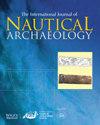威尼斯泻湖和亚得里亚海东北部的罗马“井池”、航海路线和景观改造
IF 0.6
3区 历史学
0 ARCHAEOLOGY
International Journal of Nautical Archaeology
Pub Date : 2023-01-02
DOI:10.1080/10572414.2023.2182984
引用次数: 0
摘要
摘要对威尼斯泻湖的水下调查发现,一座部分保存的建筑被解释为罗马的“蓄水池”。它确实与同一地区发掘的另一座保存较好的建筑非常相似。砂浆的分析、与相对海平面相关的结构基底深度的评估,以及底层软泻湖泥浆中没有基础支柱,都支持这种解释。与位于北亚得里亚海沿岸的其他研究不足的同类型罗马建筑进行比较表明,它们可能是用来为船只提供淡水的。在中世纪,泻湖的岛屿上也使用了类似的结构来维持居民的生活,并成为威尼斯小广场(campi)的一个特色。本文章由计算机程序翻译,如有差异,请以英文原文为准。
Roman ‘Well-cisterns’, Navigational Routes, and Landscape Modifications in the Venice Lagoon and Northeastern Adriatic
ABSTRACT Underwater investigations in the lagoon of Venice have revealed a partially preserved structure interpreted as a Roman ‘well-cistern’. It is indeed very similar to another, better-preserved building excavated in the same area. The analysis of the mortar, the evaluation of the depth of the structure base in relation to relative sea level, and the absence of foundation poles in the underlying soft lagoon mud support such interpretation. A comparison with other poorly-studied Roman buildings of the same type located along the North Adriatic littoral suggests that they were probably used to supply ships with fresh water. In the Middle Ages, similar structures were used in the islands of the lagoon for sustenance of its residents and became a characteristic of the small squares (campi) of Venice.
求助全文
通过发布文献求助,成功后即可免费获取论文全文。
去求助
来源期刊

International Journal of Nautical Archaeology
ARCHAEOLOGY-
CiteScore
1.40
自引率
20.00%
发文量
30
期刊介绍:
The International Journal of Nautical Archaeology is a forum for the exchange of ideas and research relevant to all aspects of nautical and maritime archaeology. Published twice a year in print and online, each issue of 224 pages contains peer-reviewed original articles, notes and book reviews. IJNA addresses the theory and practice of archaeology and related academic disciplines which investigate human associations with water and waterborne craft of all periods throughout the world, on seas and inland waters. Aiming to encourage a fuller understanding of the maritime past within its wider context, IJNA keeps readers abreast of the latest discoveries, new interpretations and theoretical approaches.
 求助内容:
求助内容: 应助结果提醒方式:
应助结果提醒方式:


